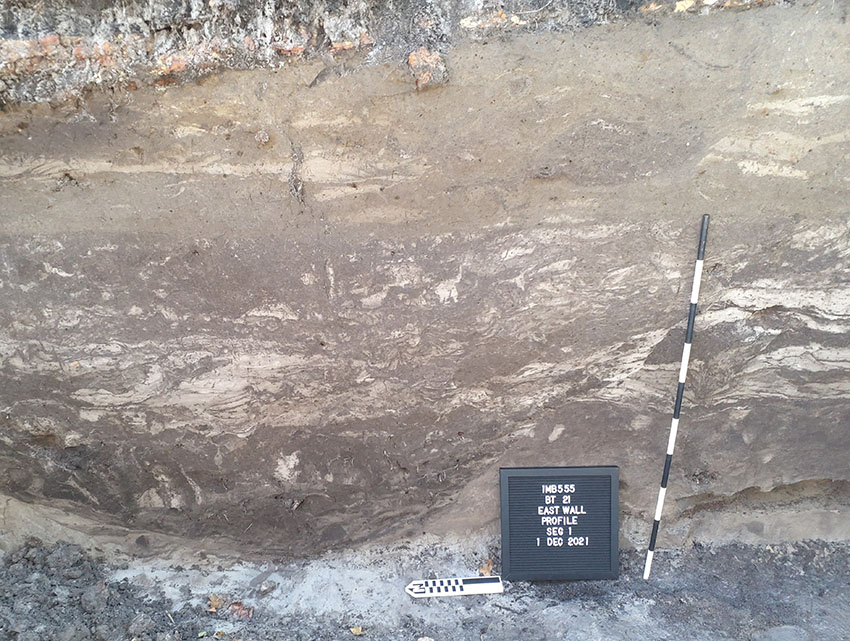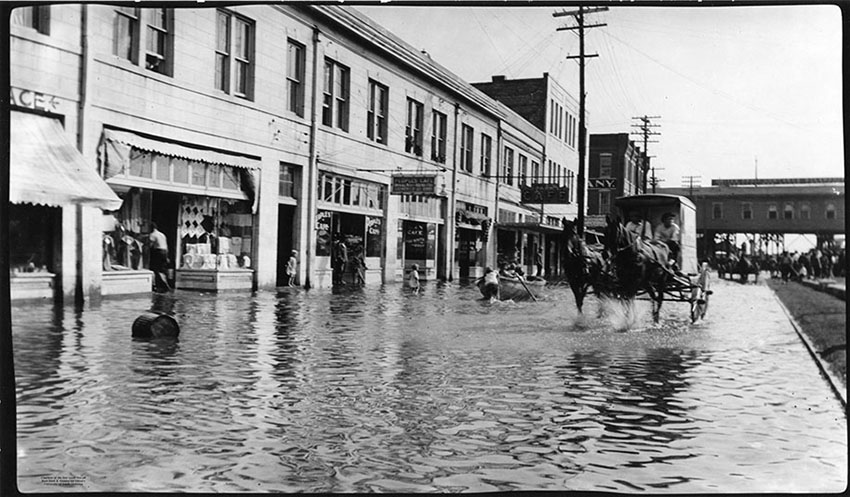Weathering the Storm: The Archaeology of Mobile Bay Hurricanes
Posted on June 29, 2022 by Rachel Hines
Weathering the Storm: The Archaeology of Mobile Bay Hurricanes
37 hurricanes have hit Mobile Bay since 1850, when recording officially began. However, hurricanes have affected the Gulf Coast for thousands of years. Archaeology provides a way to learn about those storms. The Center for Archaeological Studies examines this in the new virtual exhibit “Weathering the Storm: The Archaeology of Mobile Bay Hurricanes."
Alan Sealls, WPMI-TV Chief Meteorologist and USA Adjunct Professor, describes the science of hurricanes. He explains how a storm evolves from tropical waves to a hurricane, and how hurricanes are ranked. He also unpacks major hurricane impacts, such as storm surge, flooding, and structural damage.
Past Mobilians experienced these same impacts, which can be observed through archaeological evidence and historical resources. The exhibit includes recent research from the I-10 Mobile River Bridge Archaeology Project. In downtown Mobile, where the project area is located, archaeologists identified soil that was deposited by storms. The storm deposited soils have a distinct, wavy appearance, like in the photo below.

Photo caption: Storm-deposited soils near Mobile Bay.
These sites can tell us about hurricane history, including the frequency and location of past storms. They can also illuminate how past populations coped with these challenges. In addition to archaeological research, the exhibit also includes historic photos, maps, and newspaper quotes. Mobile Bay was impacted by several major storms in the early 20th century, including hurricanes in 1906, 1916, and 1926.

Photo Caption: Flooding on Government Street after the 1916 hurricane. Courtesy of Erik Overbey Collection, The Doy Leale McCall Rare Book and Manuscript Library, University of South Alabama.
USA Meteorology professor Dr. Sytske Kimball conducts research on modern hurricanes. She studies weather data from the South Alabama Mesonet, a network of 26 weather stations. During a hurricane, the Mesonet stations provide weather data about pressure, rainfall, and wind-speeds, -gusts, and -direction. Recent weather observations can build on long-term history gathered through archaeological data. Together, these datasets can identify long-term trends and create the most complete picture of the past as possible. Check out the full exhibit to learn more about the study of hurricanes, past and present.
Thanks to our collaborators: Alan Sealls and Dr. Sytske Kimball provided information about the study of modern hurricanes. Dr. Joe Gaston, from the College of Educational and Professional Studies, provided narration for the exhibit. Historic photos for this exhibit were provided by the Doy Leale McCall Rare Book and Manuscript Library, the Mobile Historic Preservation Society, and the Alabama Department of Archives and History. For more about the I-10 Mobile River Bridge Archaeological Project, visit www.mobileriverbridge.com.


